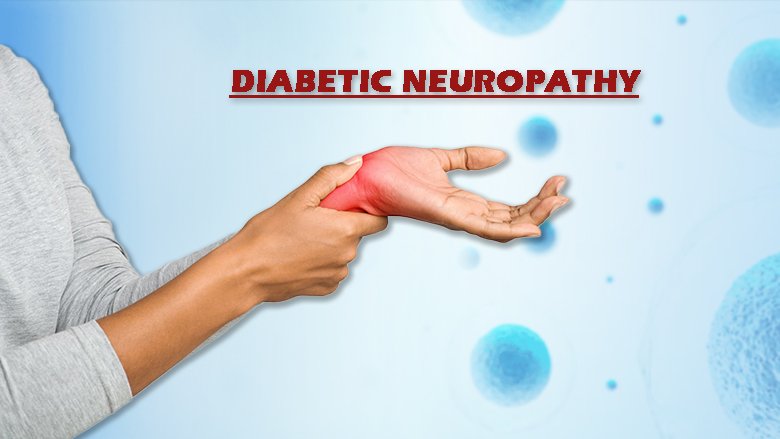
Exosome treatment for diabetic neuropathy is an emerging therapeutic approach that involves the use of exosomes—small vesicles that facilitate cell communication and can promote tissue repair. Research suggests that exosomes derived from stem cells may help reduce inflammation, promote nerve regeneration, and improve overall nerve function in patients with diabetic neuropathy.
Advantages of Exosome Treatment
Exosome therapy for diabetic neuropathy presents several advantages:
- Targeted Delivery: Exosomes can deliver therapeutic molecules directly to affected tissues, ensuring a localized effect and reducing systemic side effects.
- Regenerative Potential: Exosomes are rich in growth factors and proteins that promote nerve regeneration, aiding in the repair of damaged nerve cells and improving overall nerve function.
- Anti-inflammatory Properties: They possess anti-inflammatory molecules that help mitigate inflammation in nerve tissues, a key factor in alleviating neuropathic pain and preventing further nerve damage.
- Minimally Invasive: The administration of exosomes is typically less invasive compared to other treatment modalities, making it a more patient-friendly option with a quicker recovery time.
- Reduced Risk of Immune Rejection: As exosomes lack the cellular structures that trigger immune responses, there is a lower risk of rejection compared to other cell-based therapies.
- Enhanced Blood Flow: Exosomes promote angiogenesis, which improves blood circulation to damaged nerves, facilitating healing and regeneration.
- Potential for Disease Modification: Beyond symptom relief, exosome therapy may address underlying disease mechanisms, potentially altering the course of diabetic neuropathy.
- Versatility: Exosomes can be derived from various sources, including stem cells and mesenchymal cells, allowing for tailored treatments based on individual patient needs.
Mode of Action in Diabetic Neuropathy
Exosome therapy for diabetic neuropathy involves several key mechanisms that promote nerve repair and regeneration:
- Cell Communication
Exosomes are small extracellular vesicles that facilitate communication between cells. They carry a variety of bioactive molecules, including proteins, lipids, and nucleic acids, which can modulate cellular activities in target cells.
- Neuroprotection
Exosomes contain neurotrophic factors such as brain-derived neurotrophic factor (BDNF) and nerve growth factor (NGF), which support neuron survival and function. These factors help protect nerve cells from apoptosis (cell death) and enhance their resilience against diabetic damage.
- Anti-inflammatory Effects
Chronic inflammation is a major contributor to nerve damage in diabetic neuropathy. Exosomes carry anti-inflammatory cytokines and microRNAs that help reduce inflammation in nerve tissues. By downregulating pro-inflammatory pathways, they mitigate the inflammatory environment, which is crucial for nerve recovery.
- Angiogenesis
Exosomes promote angiogenesis, the formation of new blood vessels, through factors like vascular endothelial growth factor (VEGF). Improved blood supply enhances oxygen and nutrient delivery to damaged nerves, supporting their repair and regeneration.
- Regeneration and Repair
The regenerative capacity of exosomes is attributed to their content of growth factors and signaling molecules that stimulate cellular proliferation and differentiation. This encourages the repair of myelin sheaths and axonal regeneration, crucial for restoring nerve function.
- Gene Regulation
Exosomes can transfer microRNAs and other regulatory RNAs that modulate gene expression in recipient cells. This can lead to altered protein synthesis, promoting cell survival, and reducing oxidative stress, which is particularly beneficial in the diabetic neuropathic context.
Indicators For Diabetic Neuropathy With Exosome Treatment
Indicators for considering exosome therapy for sciatic nerve injury and sciatica encompass a range of clinical presentations, diagnostic findings, and patient characteristics that suggest the suitability of this regenerative treatment approach.
- Clinical Symptoms
Radiating Pain: Persistent pain radiating from the lower back through the buttocks and down one or both legs, characteristic of sciatica.
Numbness and Tingling: Sensations of numbness, tingling, or electric-like shocks along the path of the sciatic nerve.
Muscle Weakness: Weakness in the affected leg(s), particularly noticeable during activities like walking, standing, or lifting.
- Diagnostic Findings
MRI Imaging: Magnetic resonance imaging (MRI) is crucial for identifying structural abnormalities causing nerve compression or irritation, such as herniated discs, spinal stenosis, or degenerative changes in the spine.
Electromyography (EMG): EMG studies can assess the function of peripheral nerves and muscles, helping to localize and quantify nerve damage or dysfunction.
Clinical Examination: Physical examination findings indicative of sciatica include positive straight leg raise test, diminished Achilles reflex, and sensory deficits along the sciatic nerve distribution.
- Failure of Conservative Treatments
Ineffectiveness of Pain Medications: Persistent pain despite treatment with analgesics, non-steroidal anti-inflammatory drugs (NSAIDs), or muscle relaxants.
Limited Relief from Physical Therapy: Insufficient improvement in symptoms following a structured physical therapy program aimed at reducing pain and improving mobility.
Recurrent or Chronic Symptoms: Recurrence of sciatic pain or chronic symptoms that significantly impair daily activities and quality of life despite conservative management.
- Patient Characteristics
Age and Activity Level: While sciatica can affect individuals of all ages, exosome therapy may be particularly beneficial for younger patients with early-onset sciatic nerve injury or older adults with degenerative changes in the spine.
General Health Status: Patients should generally be in good health, without contraindications such as active infections, severe cardiovascular conditions, or malignancies that could complicate treatment.
- Patient Preference and Informed Consent
Informed Decision: Patients should understand the potential benefits, risks, and limitations of exosome therapy compared to other treatment options.
Preference for Non-surgical Options: Patients who prefer a non-surgical approach to managing sciatica, avoiding the risks and recovery associated with surgery, may find exosome therapy appealing.
The Procedure of Diabetic Neuropathy With Exosome Treatment
Exosome therapy involves isolating exosomes from stem cells, followed by purification and concentration. The exosomes are then administered to the patient through intravenous injection or local delivery to the affected area.
This minimally invasive procedure aims to promote nerve repair and reduce inflammation in diabetic neuropathy. SCCI Stem Cell Care India is one of the greatest healthcare consultants in Delhi, giving the best advice and treatment at the best place according to your preference at very reasonable prices.

